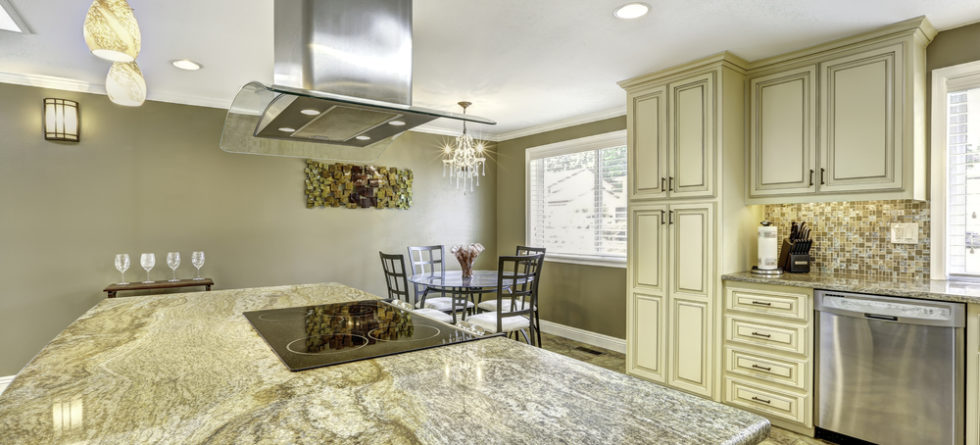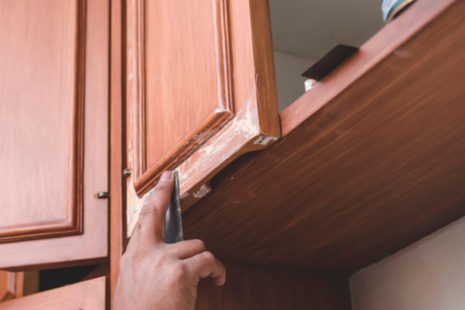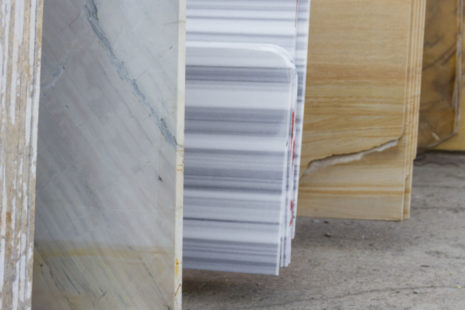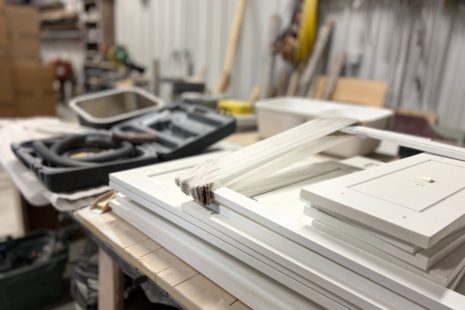In today’s homes, where square footage comes at a premium, maximizing every inch of available space has become essential. Custom countertops offer more than just aesthetic appeal—they provide strategic solutions for optimizing functionality in kitchens and bathrooms of all sizes. Whether you’re working with a compact urban apartment or simply want to enhance your existing layout, customized surfaces can transform how you experience your most-used spaces.
How Custom Countertops Enhance Functionality
Unlike standard pre-fabricated options, custom countertops are designed to perfectly align with your unique space and workflow requirements. This tailored approach eliminates awkward gaps, wasted corners, and impractical layouts that often plague off-the-shelf installations.
Custom solutions allow for thoughtful integration of specialized work zones based on your specific cooking habits and entertainment style. A dedicated baking station with marble at a comfortable height, an integrated cutting board near the sink, or a purpose-built coffee station can dramatically improve how you interact with your kitchen.
Beyond simple measurements, true customization addresses ergonomic considerations often overlooked in standard installations. Counter heights adjusted for the primary cook’s stature, carefully planned overhangs for comfortable seating, and strategically positioned prep areas relative to appliances all contribute to a more intuitive, comfortable cooking experience.
The benefits extend to material selection as well, with the ability to specify different surfaces for different functional areas. Heat-resistant materials near cooking zones, water-resistant options surrounding sinks, and more decorative choices for islands or visible areas create a perfect balance of performance and aesthetics.
Smart Space-Saving Countertop Solutions
One of the most innovative approaches to maximizing limited space involves multi-level countertop designs. These versatile configurations provide distinct zones for different activities—perhaps a higher bar-height section for casual dining and a standard-height area for food preparation—without requiring additional floor space.
Extending countertops across previously unused areas creates valuable new work surfaces. Window-spanning countertops transform bright but underutilized areas into charming breakfast nooks or herb gardens. Slim console-style extensions along gallery walls provide casual dining without the footprint of a traditional table.
Integrated storage solutions within the countertop design itself can dramatically reduce clutter. Knife slots built directly into butcher block sections, retractable cutting boards that slide beneath stone surfaces, and custom compartments for frequently used small appliances keep essentials within reach without sacrificing precious counter space.
Perhaps the most impressive space-saving innovation comes from mobile or adaptable countertop elements. Rolling islands that nest partially beneath fixed counters when not in use, fold-down extension leaves for occasional needs, and sliding surfaces that reveal specialized equipment below all deliver flexible functionality without permanent footprint expansion.
Design Ideas for Small Kitchens
In compact kitchens, the continuity of countertop material from counter to backsplash creates a seamless visual effect that makes spaces appear larger while eliminating hard-to-clean seams where dirt typically accumulates. This approach works particularly well with quartz and solid surface materials that can be fabricated with coved (curved) transitions rather than sharp 90-degree corners.
Wrapped edge treatments that eliminate visible seams and create the illusion of thicker, more substantial surfaces can make modest countertops appear more luxurious. This technique delivers high-end visual impact without sacrificing the precious inches that bulkier edges would consume.
Extending countertops in unexpected directions often unlocks hidden potential in small kitchens. A surface that continues across an underutilized windowsill, transitions into a banquette dining area, or wraps around a corner to create a mini home office delivers functionality that standard configurations simply cannot match.
Light-colored, reflective countertop materials dramatically enhance the perception of space in compact areas. Whites, creams, and pale grays with polished finishes bounce available light throughout the room, while materials with subtle movement prevent the sterile appearance that completely solid surfaces might create.
Investing in Custom Worktops for the Future
While custom countertops typically require a greater initial investment than mass-produced alternatives, their tailored functionality often delivers superior long-term value—particularly in challenging spaces where standard solutions would require significant compromises.
The value proposition becomes even more compelling when considering how precisely matched countertops can enhance overall property appeal. Real estate professionals consistently identify kitchen features as major factors in purchase decisions, with thoughtfully designed countertops ranking among the most impactful elements.
Beyond immediate resale considerations, truly custom countertops offer impressive adaptability as your needs evolve. Well-planned installations can accommodate future appliance upgrades, support aging-in-place requirements, and adjust to changing household compositions without complete replacement.
When viewed through this long-term lens, custom countertops represent not merely a cosmetic upgrade but a fundamental improvement in how you interact with your home. By eliminating the daily frustrations of poorly configured spaces, these tailored solutions enhance both practical functionality and emotional satisfaction with your living environment.
For homeowners ready to maximize their space with custom countertop solutions, the design process begins with a thorough assessment of how you actually use your kitchen or bathroom—not simply how these spaces are conventionally arranged. By prioritizing your specific needs over standard configurations, you’ll create a uniquely personal environment where form truly follows your function.




